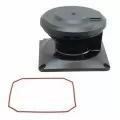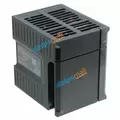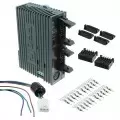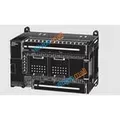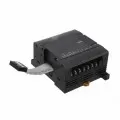OUTLINE:
Comparative Analysis: Microprocessors vs microcontrollers
 329
329Microprocessors
The microprocessor, the brain of a computer system, is an independent integrated circuit chip that is primarily responsible for performing tasks of the central processing unit (CPU), such as arithmetic logic operations, data processing, and instruction execution. And the microprocessor is a special programmable integrated circuit in which all components are miniaturized into one or more integrated parts. It usually works with components such as external memory, input and output interfaces to form a complete computer system and is the core component of a microcomputer system. Microprocessors typically contain an arithmetic logic unit (ALU), a control logic unit, and possibly a control storage unit. In terms of function, the microprocessor is mainly responsible for data processing and calculation, and is synonymous with the central processing unit (CPU). For example, AMD Ryzen cpus, Intel Core series, etc., all belong to the category of microprocessors.

Microcontroller
A microcontroller is a highly integrated chip that integrates peripherals such as a microprocessor, memory (including ROM and RAM), input and output ports, timers, and interrupt controllers to form a miniature computer system. It is not just a CPU, but a complete microcomputer system. Microcontrollers are designed to achieve specific functions, such as controlling motors, sensor data acquisition, etc., and are widely used in embedded systems, such as home appliances, automotive electronics, sensor nodes, etc.
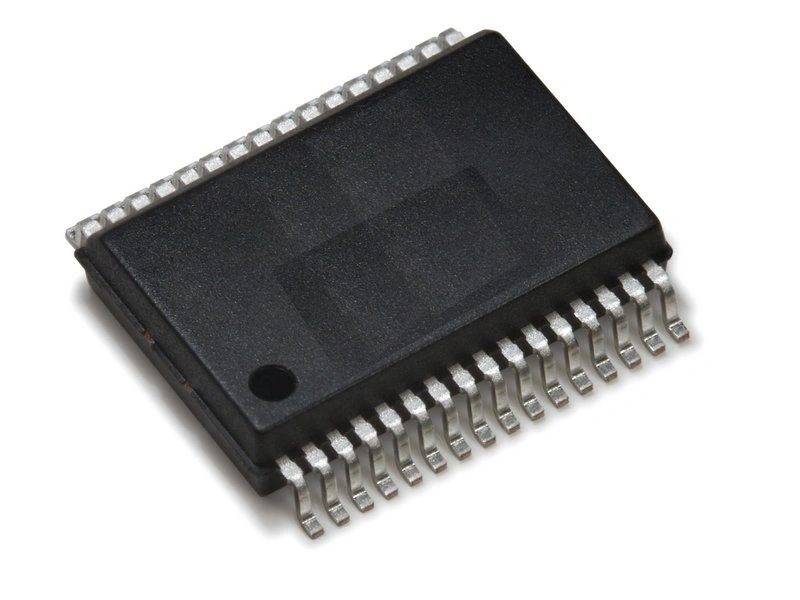
Detailed Comparison: Microprocessors vs microcontrollers
Definition and structure
A microprocessor is a special programmable integrated circuit in which all components are miniaturized into one or more integrated sections. A microprocessor is capable of receiving coded instructions at one or more of its ends, executing those instructions, and outputting signals that describe its state. As for the special structure of this smart element, it consists primarily of an arithmetic logic unit (ALU) and a control logic unit, and sometimes a control storage unit (in a microcomputer with a microprogrammed instruction set). The microprocessor itself does not contain all the peripheral circuits needed for a complete computer system, such as memory, I/O interfaces, etc., which usually need to be implemented by external extensions.
While a microcontroller is an integrated circuit chip that integrates the central processing unit (CPU), random access memory (RAM), read-only memory (ROM), multiple I/O ports, interrupt system, timing/counter and other functions on a silicon chip. For this reason, microcontrollers are also known as monolithic microcomputers. In addition to the CPU, the microcontroller also contains a large number of peripheral circuits, such as RAM, ROM, serial and parallel interfaces, timers, interrupt systems, etc., which are all implemented on the same chip. This allows the microcontroller to perform more controlling tasks independently without relying on external expansion circuits.
Function and use
Microprocessors are primarily used to perform complex arithmetic and logic operations, control entire computer systems, and process large amounts of data. Its instruction set is usually designed for processing large amounts of data and has strong data processing capabilities. And they are commonly applied as the core processor (CPU) of a microcomputer system, together with other external devices (such as memory, I/O devices, etc.) make up a complete computer system. They are widely used in personal computers, servers, workstations and other occasions.
Microcontrollers are mainly used to control various equipment and systems, such as real-time industrial control, communication equipment, home appliances, intelligent instruments, etc. Its instruction set pays more attention to the control of input and output, and can handle various control signals and interrupt requests. Because of their highly integrated nature, microcontrollers are often used in situations where the number of components and control complexity need to be minimized. They are widely used in embedded systems, such as automotive electronics, medical equipment, industrial automation and other fields.
Performance and characteristics
Microprocessors, generally, have higher processing speed and greater data processing power, but also relatively higher power consumption. They require external expansion circuitry to support full computer system functionality.
As for microcontrollers, while processing speed and data processing power may not be as powerful as microprocessors, they have advantages in terms of power consumption, cost, reliability, etc. Microcontrollers usually have lower power consumption and higher integration, which make them suitable for practical applications where there are strict requirements for volume, consumption and cost.
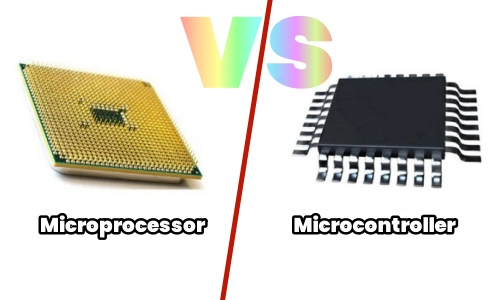
Microprocessors vs Microcontrollers: Advantages Disadvantages
Microprocessors and Microcontrollers all play crucial roles in embedded system design, each with its unique advantages and disadvantages.
|
The pros and cons of Microprocessors |
|
|
Advantages |
Disadvantages |
|
High performance: Microprocessors usually have higher processing power and can handle complex computing tasks, which is suitable for applications that require high performance computing. |
High cost: Compared to a microcontroller, a microprocessor usually costs more because it requires more peripherals and supporting circuitry.
|
|
Scalability: Because the microprocessor is the core component of the computer system, its peripherals (such as memory, hard disk, etc.) can be expanded as needed to meet different system requirements. |
High power consumption: In order to achieve high performance, microprocessors may consume more power during actual operation.
|
|
Flexibility: Microprocessors can be programmed through software to achieve a variety of functions, so they have a higher degree of flexibility. |
Need more peripheral circuits: Microprocessors usually need to work with a variety of peripheral devices (such as memory, I/O devices, etc.), so the designing complexity is higher. |
|
The pros and cons of Microcontrollers |
|
|
Advantages |
Disadvantages |
|
High integration: The microcontroller integrates the CPU, memory, I/O interface and other components on a small chip, achieving a high degree of integration, reducing the design complexity and cost. |
Limited performance: Microcontrollers may have lower processing power than microprocessors and are not suitable for applications that require high performance computing. |
|
Low power consumption: Because microcontrollers integrate all the necessary components and are designed with low-powered characteristics in mind, their power consumption is generally low, making them suitable for portable devices and embedded systems. |
Limited scalability: Since the microcontroller integrates all components on a single chip, its scalability may be limited. |
|
High reliability: The microcontroller has higher anti-interference ability and stability, and can work normally in harsh environments. |
Limited resources: The microcontroller's resources such as memory and I/O interfaces may be relatively small and may not be sufficient for application scenarios that require a lot of storage and I/O operations.
|
|
Easy programming: Many microcontrollers offer specialized programming for various environments and development tools that make programming and debugging easier. |
|
Applications Of Microprocessors and microcontrollers
Microprocessors and Microcontrollers differ in their main application fields, and here are some examples of their respective main application for your reference.
Microprocessors
1. Personal Computers (PCS) and servers
Microprocessors are the core components of PCs and servers, responsible for executing programs, processing data and coordinating the work of various computer components. For example, Intel's Core series (such as i3, i5, i7, etc.) and AMD's Ryzen series processors are widely used in personal computers and servers, providing powerful computing power and efficient data processing capabilities.
2. Workstations and supercomputers
Microprocessors also play a crucial role in workstations and supercomputers that require higher computing performance. These systems are typically equipped with multiple high-performance microprocessors that increase computing speed and efficiency through parallel processing. For example, in scientific research, weather forecasting, financial analysis and other fields, supercomputers use a large number of microprocessors for complex data processing and simulation calculations.
3. Embedded Systems (high-end applications)
While microcontrollers are more common in embedded systems, some high-end embedded systems also employ microprocessors for more complex functions and higher performance. For example, in industrial automation, medical devices, aerospace and other fields, microprocessors are used to implement functions such as advanced control algorithms, image processing, and data communication.
Microcontrollers
1. Industrial Automation
Microcontrollers have a wide range of applications in the field of industrial automation, such as temperature control, motor control, pressure monitoring and so on. They can achieve accurate control and monitoring of various equipment on the production line, improving production efficiency and product quality.
2. Consumer Electronics
Microcontrollers also play an important role in the field of consumer electronics, such as household appliances (washing machines, refrigerators, air conditioners, etc.), smart wearable devices (smart watches, health bracelets, etc.) and smart home devices (smart door locks, smart lighting systems, etc.). These devices usually need a microcontroller to achieve various intelligent functions, such as remote control, voice control, automatic detection, etc.
3. Automotive Electronics
With the continuous development of automobile electronization, the application of microcontrollers in the automobile field is more and more extensive. They are used in engine control, body control, safety system and many other aspects to improve the driving comfort and safety of the car. For example, ABS anti-lock braking system and ESP body stability system are inseparable from the support of microcontrollers.
In summary, microprocessors and microcontrollers have different priorities in their main application areas, but both play important roles in advancing technological progress and social development.
Which one is better: Microprocessor vs microcontroller
As microprocessors and microcontrollers both have their own unique advantages and applicability in different application scenarios, the optimal choice should be dependent on your specific needs.
Firstly, you can depend on the application scenario. Select the ultimate product based on the practical application and specific requirements. If the operating situation requires complex functions such as high-performance computing, multitasking, or graphics processing, a microprocessor is more suitable. If the application requires low cost, low power consumption and simple control, a microcontroller is more suitable.
Secondly, you can depend on system requirements. Consider the overall requirements of the whole system, including performance, cost, power consumption, reliability, etc., and make a comprehensive evaluation.
Last but not least, you can depend on development resources. Consider the technical level and development resources of the development team, choose a device that is easy to program, debug, and maintain.
Final Verdict
When comparing microprocessors or microcontrollers, you should choose the most suitable device based on the specific application needs, system requirements, and development resources. In some cases, it may even be necessary to combine the two to achieve more complex and efficient system functions. Hope this guide will help you!

Disclaimer: The views and opinions expressed by individual authors or forum participants on this website do not represent the views and opinions of Chipsmall, nor do they represent Chipsmall's official policy.

share this blog to:


